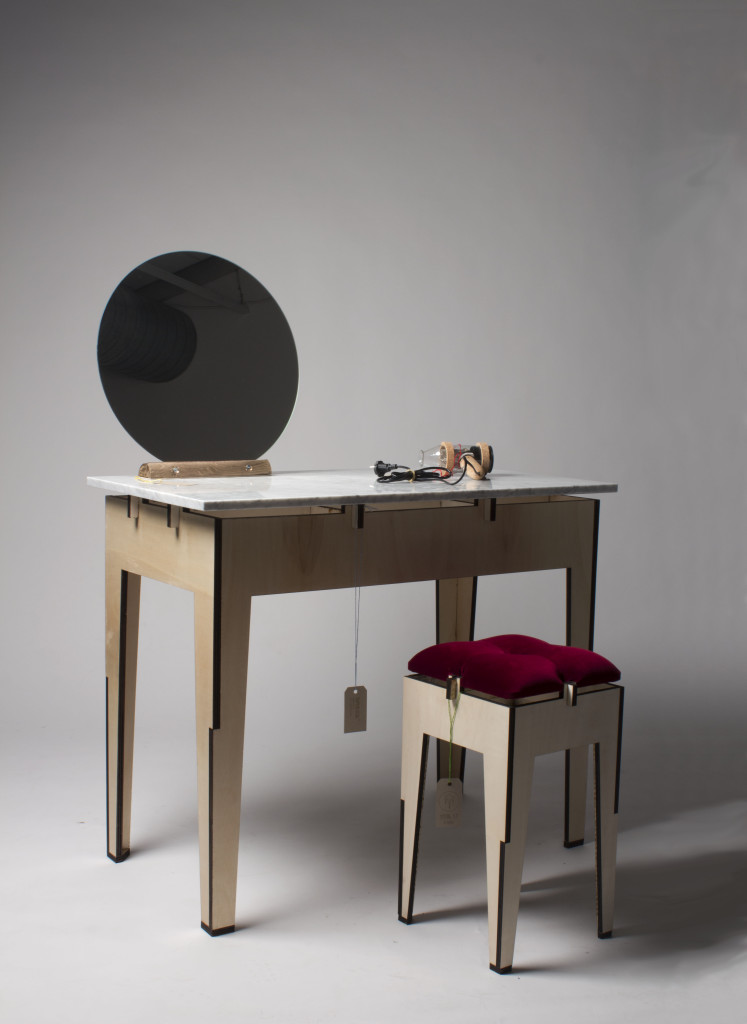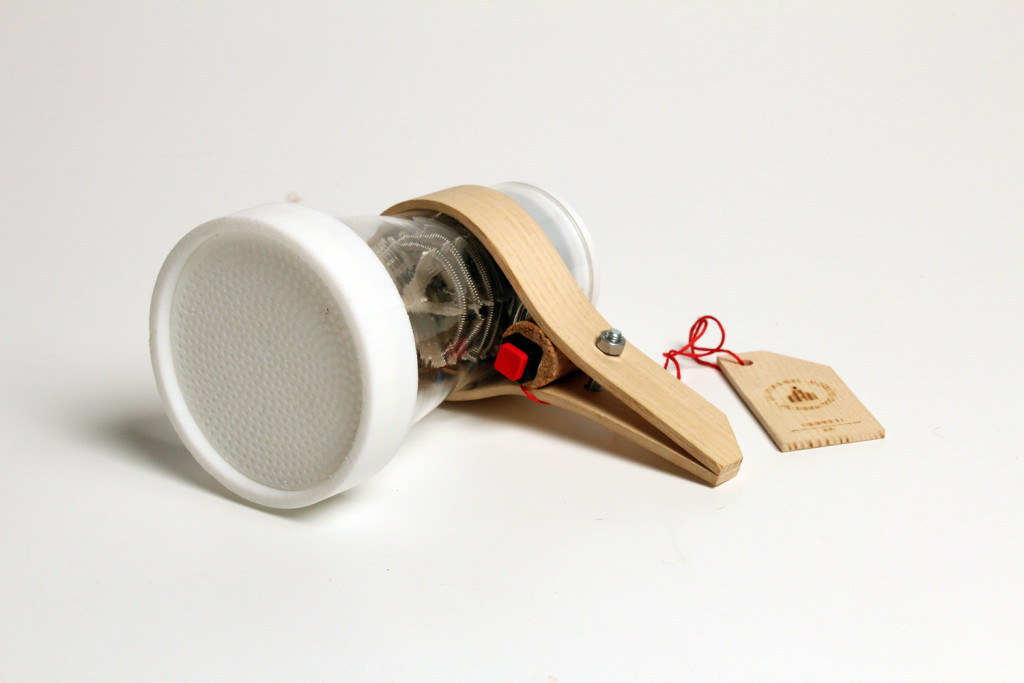SUPERLOCAL
It is urgent that we update our methods of production. They cannot exist any longer just to maximize efficiency or profits; instead production must address social and environmental viability.
We are a group of designers who believe that the future of production will be characterized by making things locally. We believe that there is a need for an alternative to the usual (industrial) way of producing goods. We believe in the rising of networks as the new and best generators of social and economic value. Finally, it’s a fact that producing locally means less shipping and therefore less pollution.
We designed some production lines in the city of Eindhoven, finding and connecting resources, materials and labor all found within a short bike ride, in order to make everyday objects: a hair dryer, a dressing table, a mirror, a lamp and a stool (production 1.0). The production 1.0 (beta) is released in open source on the system website, and serves as the starting point for an evolutionary process applied to objects.
The goal of SUPERLOCAL is to provide an open production database for making everyday objects, and thereby give creative and critical tools to people for re-creating their world.







This project immediately struck me as sensible. But it also raises a number of important questions, such as what is local? In the Netherlands, I understand that commuting is a way of life and so local might mean sourcing goods from Amsterdam while living in Eindhoven. Or perhaps tapping into resources in neighbouring Germany or Belgium. Ecologically, there is a lot to be said about expanded networks, it’s purportedly more ecological to eat lamb from NZ than from the UK (if you’re living in Europe) due to the low ecological cost of long distance shipping and the relative advantage of climate and natural farming methods in NZ. However, I find the social component of your project most compelling. How can a view on sourcing locally re-build social networks and, through that, social innovation? Is a map the best way to approach this and where do you go from there? How do you build a culture of mutual support, learning and adaptation?
I am concerned that the future city will be inhabited by individuals that work at home, consume on line, and share little in terms of space or experience with their neighbours. An alternative vision might be rooted on something closer to your project, whereby the city of the future will be based on social networks that link ingenuity and various resources together as both a form of production and consumption, and through that creating a rich layer of social-exchange.
Hi Michael, many thanks for your comment! I am really happy that my project makes discussion start. It is actually the social aspect that I’m stressing lately. We are organising production tours to make people experience the production of a local made object. I work together with institutions, lately also with the Design Museum in London, to engage with the museum visitors and open the self production world to them. You can watch the production tour video from Eindhoven here: https://vimeo.com/162345352
And yes, indeed is a map the best way to represent what’s happening. Regarding building a culture of mutual support, learning and adaptation I asked myself the same question many times. My own catalyst of change is beauty. That is intended in the deep meaning of the word. I try to make objects that are sustainable on one side (locally made, reusable materials) and desirable on the other. Making objects that people want is my attempt to reach a bigger public than the ones that are already interested in “social” projects. I believe that this is the moment when this kind of projects have to reach a main stream interest, and therefore to really make a change in the culture that we have about daily life products.
I think you hit on something very important here by including beauty into the mixture of intentions. Too often these sort of pragmatic local initiatives are quick to trade the intangible for the tangible and in the process lose an important factor. Perhaps you should describe the project as one-part local-network building, one-part resilience making, and one-part seeking beauty. These three parts, together, compose a rich dialectic.
I find the reference to (deep) beauty as intriguing as problematic. Intriguing because many ‘socially engaged’ design (and art) projects lack an aesthetic consideration that allows them to have a bigger impact in the context where they are situated. Problematic when you relate ‘beauty’ to ‘desirability’: is it your goal to make people ‘desire’ products just because you make them ‘beautiful’ (from a very subjective perspective)? I don’t consider that the ‘deep sense of beauty’. I’ll give an example. Beckett Simonon (http://www.beckettsimonon.com) is a brand of leather and garment products which central concern is to work with responsibly-sourced materials and fair working conditions (sweat-shop free). Besides that, they have a completely different economic and production model, in which they sell before they manufacture (thus, not having to create a ‘desire’ for products, just because they have in stock). Their products sell incredibly, but not because all of this story, but because their excellent craftsmanship and aesthetic. Aesthetic and beauty come as a result of a socially responsible process, not an added ‘plugin’ to generate more ‘desire’.
Hi Pablo! thanks for your comment. However, I’m sorry I didn’t explain myself better enough. By beauty I don’t mean a “plug-in” on the products to make them more desirable. Unfortunately nowadays this term is suddenly connected to an idea of “shape over content”, therefore superficial. What I mean is different though.
Let me play cool: a very popular word in ancient Greece was “καλοκαγαθία”, which come from “καλὸς καὶ ἀγαθός”. It defines something which is esthetically and morally beautiful. The idea of beauty back then was not a “plug-in” but something that connects soul and body, aesthetic and intimate worlds. There is no outer beauty without an inner one and vice versa. Seeking for beauty doesn’t mean that you necessarily achieve it. It is a more like a tendency than an destination.
This idea is deeply rooted in our culture as western countries, and I think it is much more modern than we expect.
If we apply this idea to products, beautiful objects are the ones that are made with honesty, and therefore aesthetically pleasant, like in the case of “Beckett Simonon” ones. Every material is used in a straight way, just enlighting its properties and aesthetic values. Nothing is added to the necessary, and there is a red string connecting all the products in terms of shape and style. In addition, there is coherence between the shape and the concept behind. For instance, in the case of SUPERLOCAL, to make production trasparent means having a transparent hair dryer.
In your project, The Other Market, you were looking for a “not designed” aesthetic for example, to be coherent to your critical attitude towards “traditional” design. That is still seeking for beauty..
I hope I explain myself well enough, and sorry for being a not so good writer.
Yes, Andrea, you make yourself very clear! And I echo Michael in celebrating the fact that you bring ‘beauty’ to the discussion, specially in socially engaged practices, when it is sometimes disregarded. I just found problematic the relation between beauty and ‘desire’ that you had made before, for it seemed very tied to consumption dynamics, but you have now clarified that too.
I like this: “Seeking for beauty doesn’t mean that you necessarily achieve it. It is a more like a tendency than an destination. If we apply this idea to products, beautiful objects are the ones that are made with honesty”. Plenty to explore here for designers, great approach!
I find this discussion interesting because it is about design related to our human (and social) condition. We had a discussion of a similar type with Thomas Verbal around his project, would be interesting to read your opinion on it: http://www.traderstalk.org/contribution/some-where/